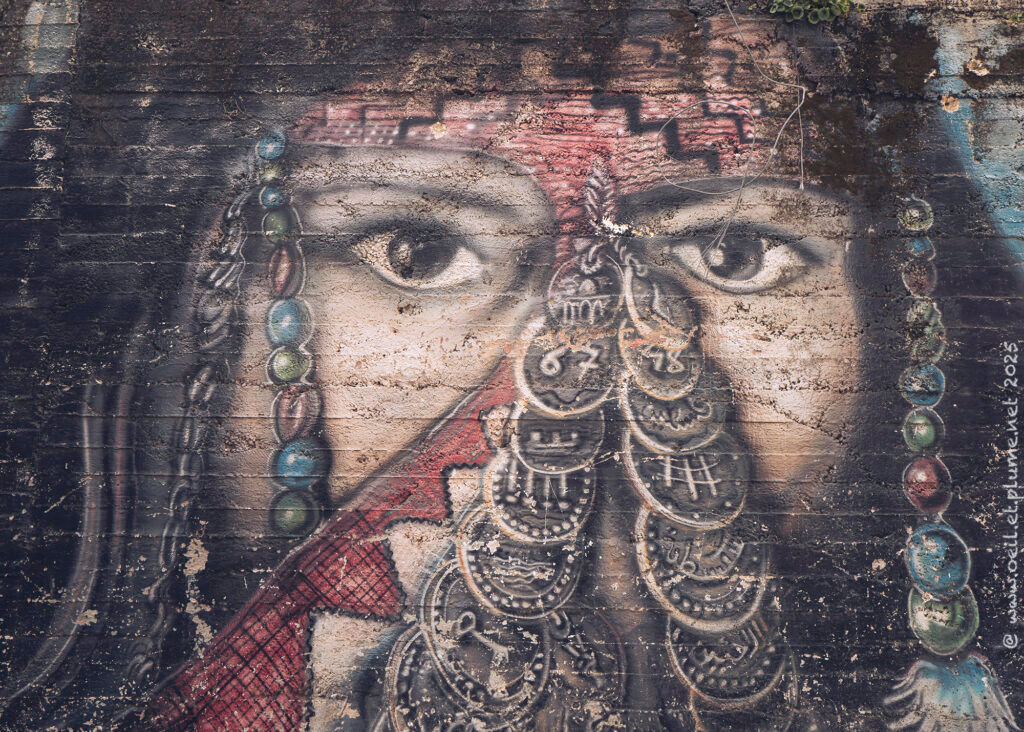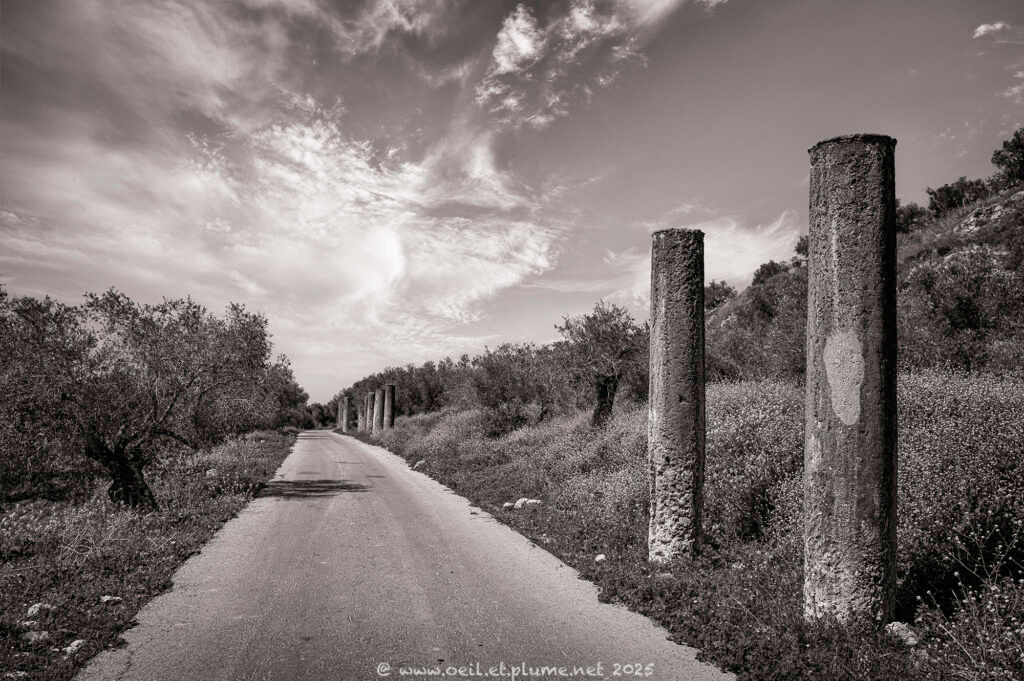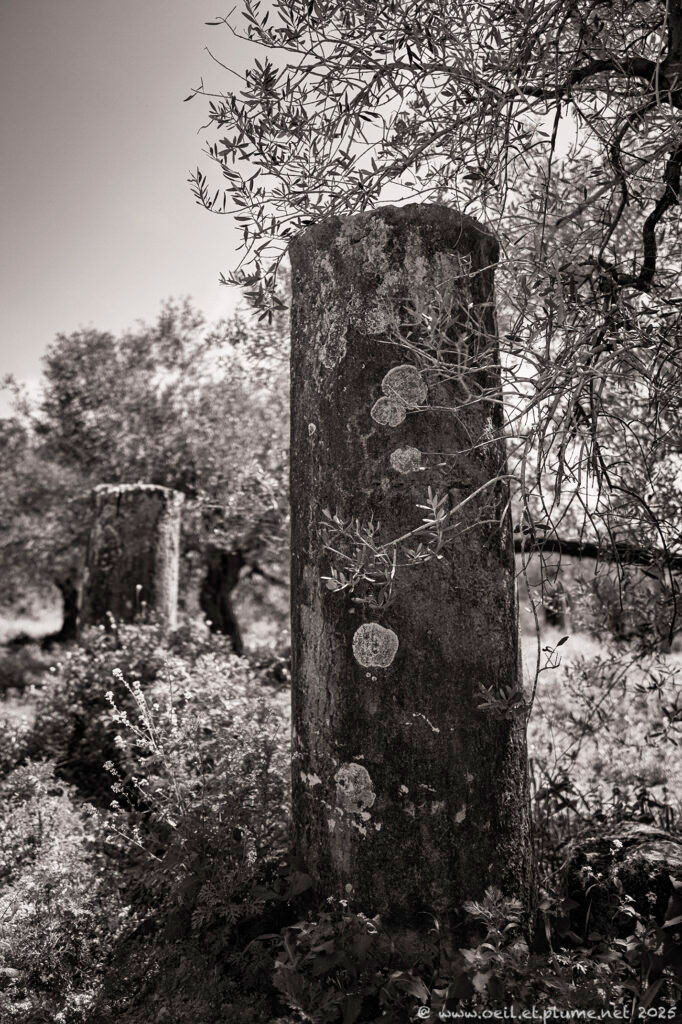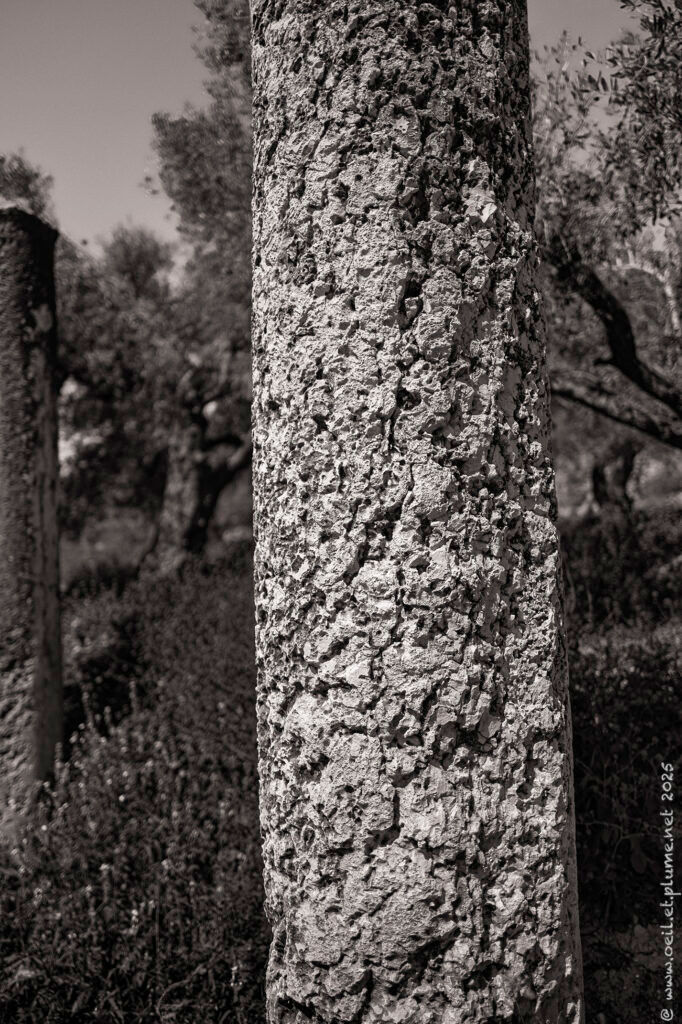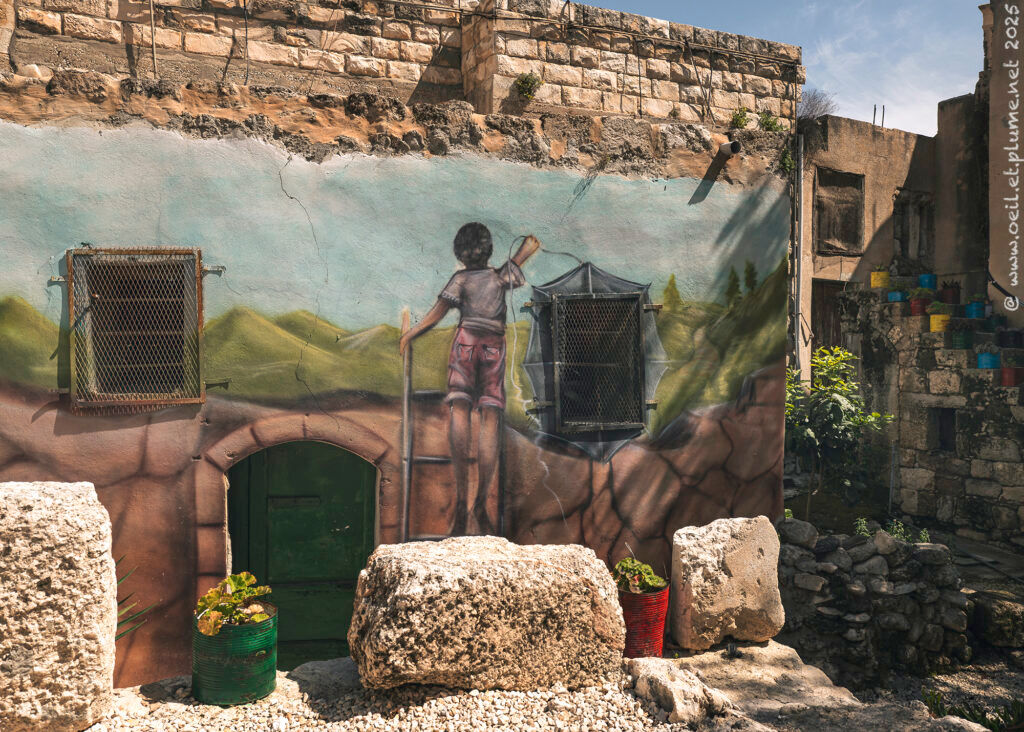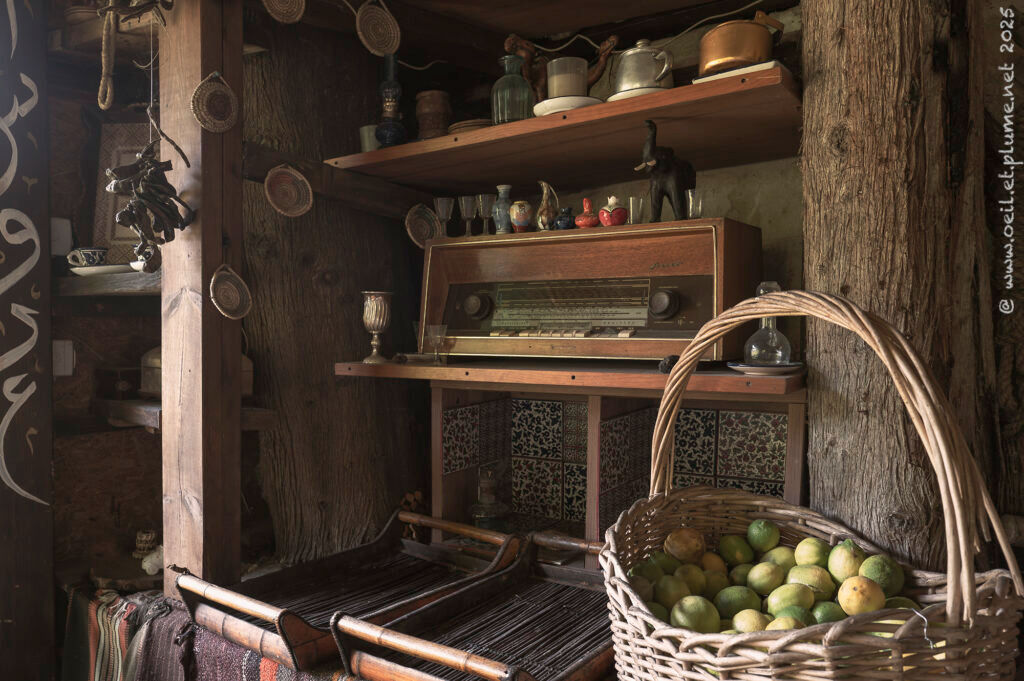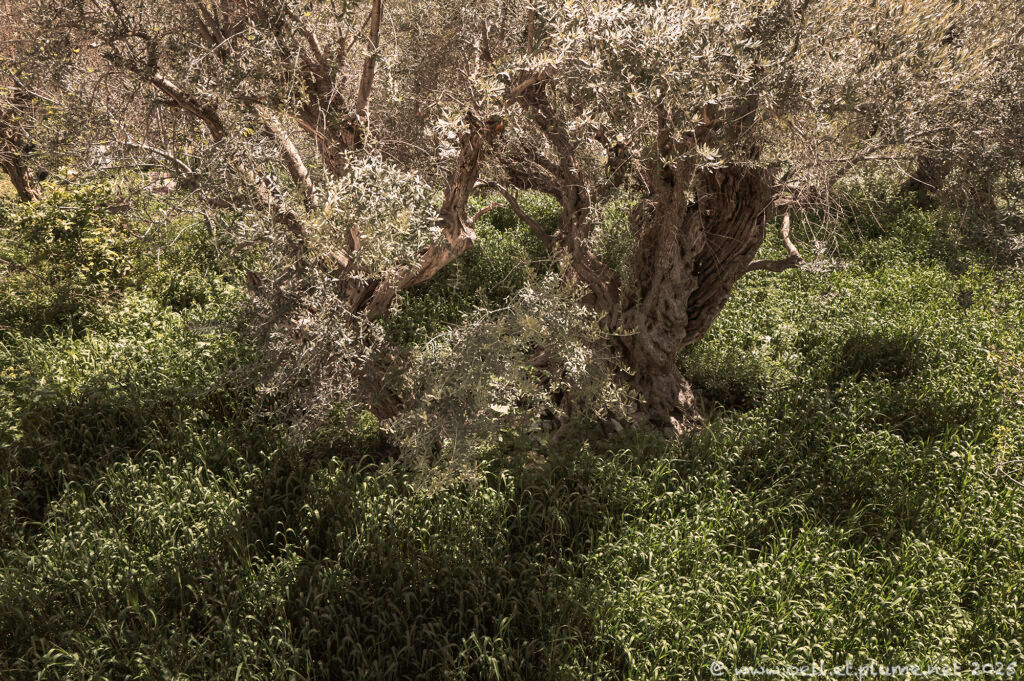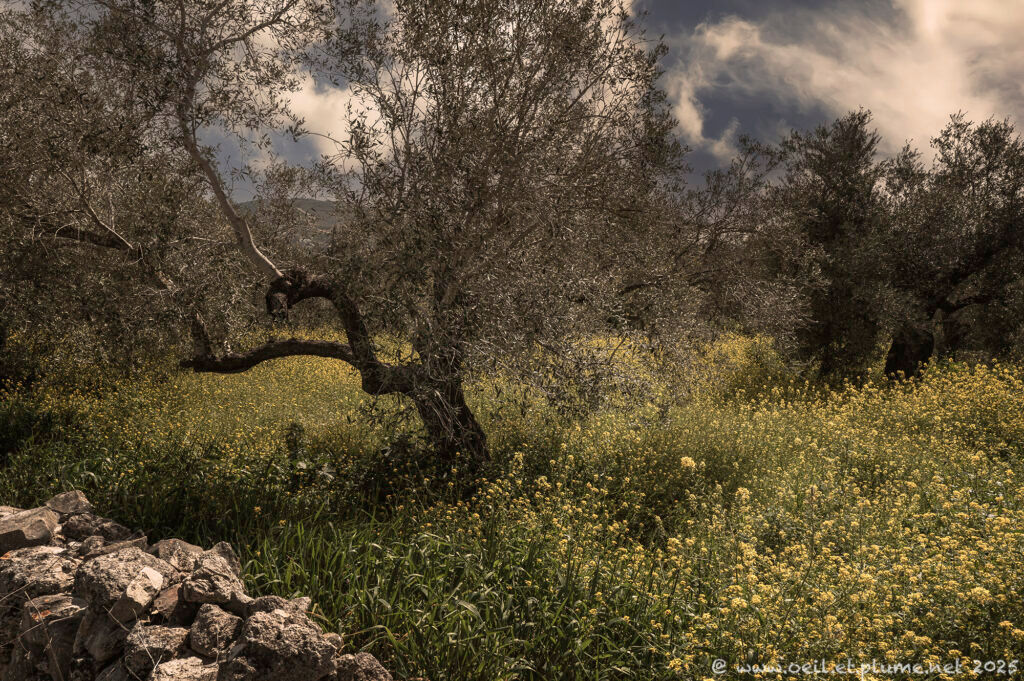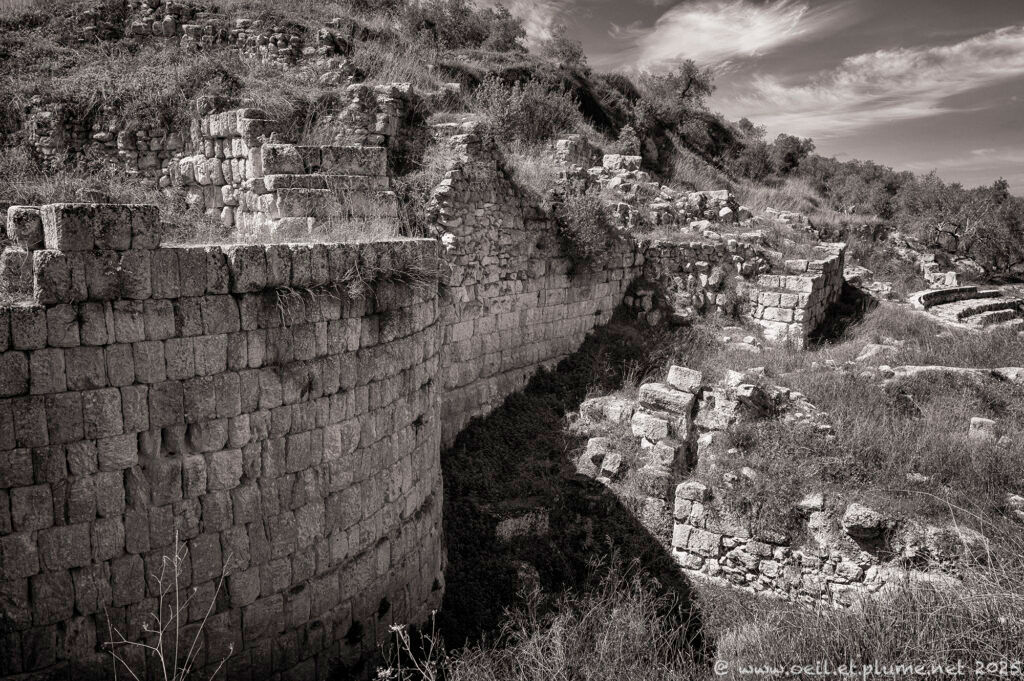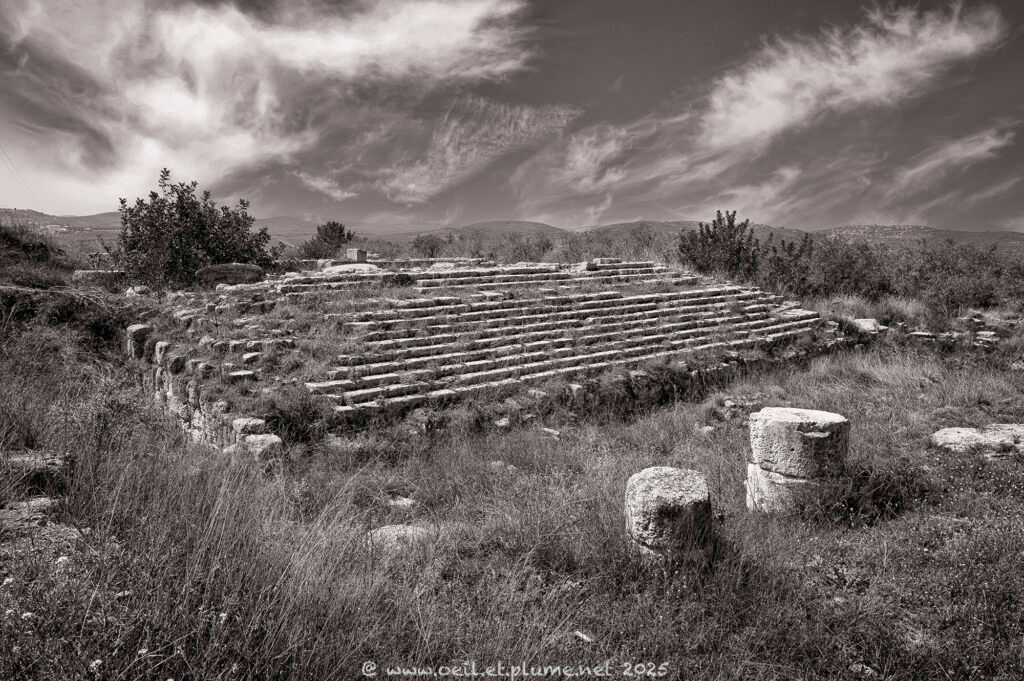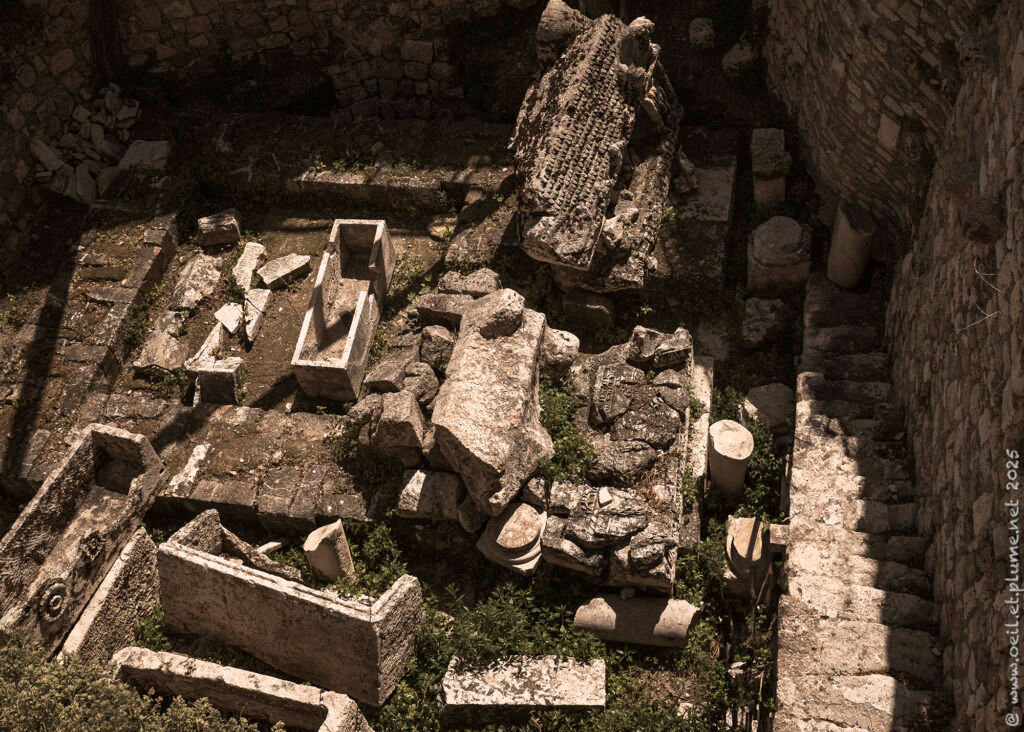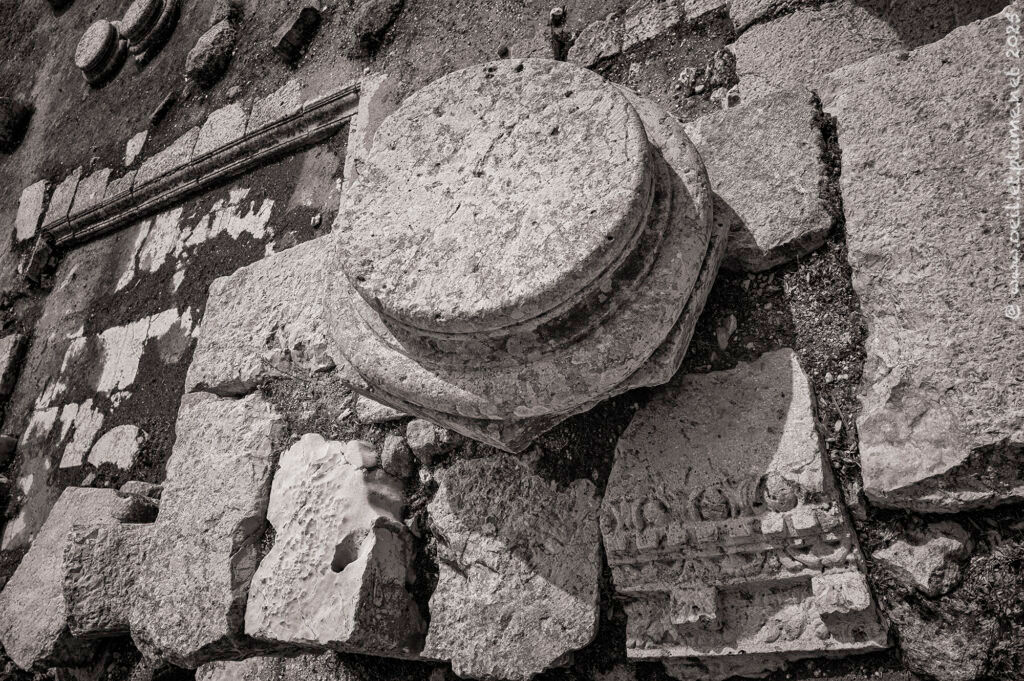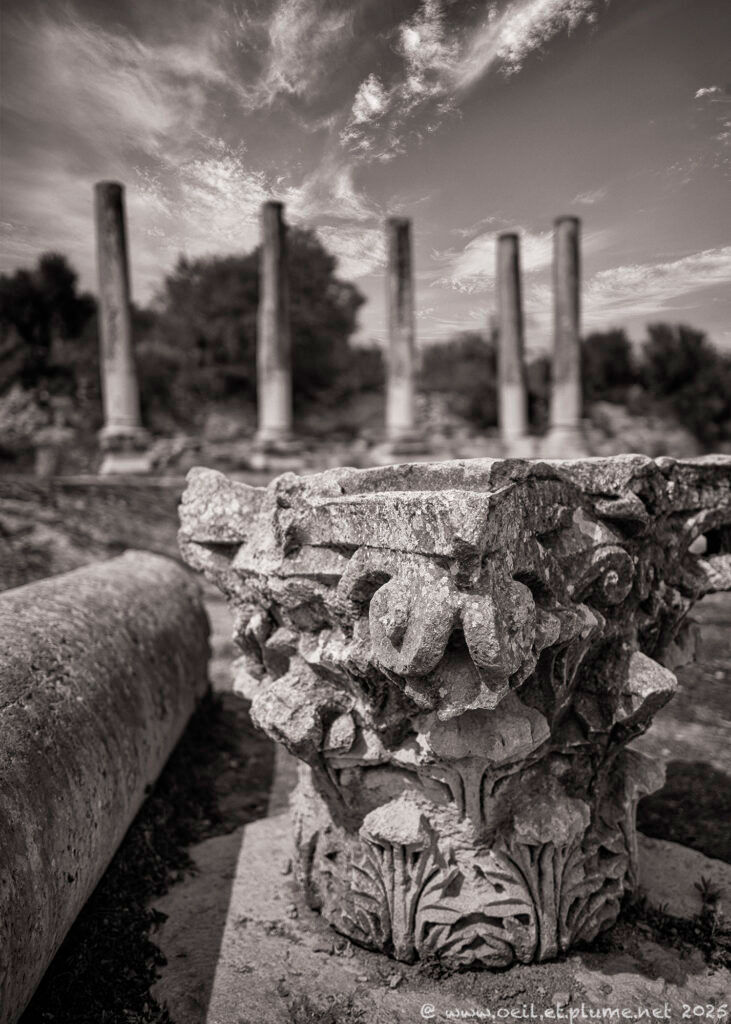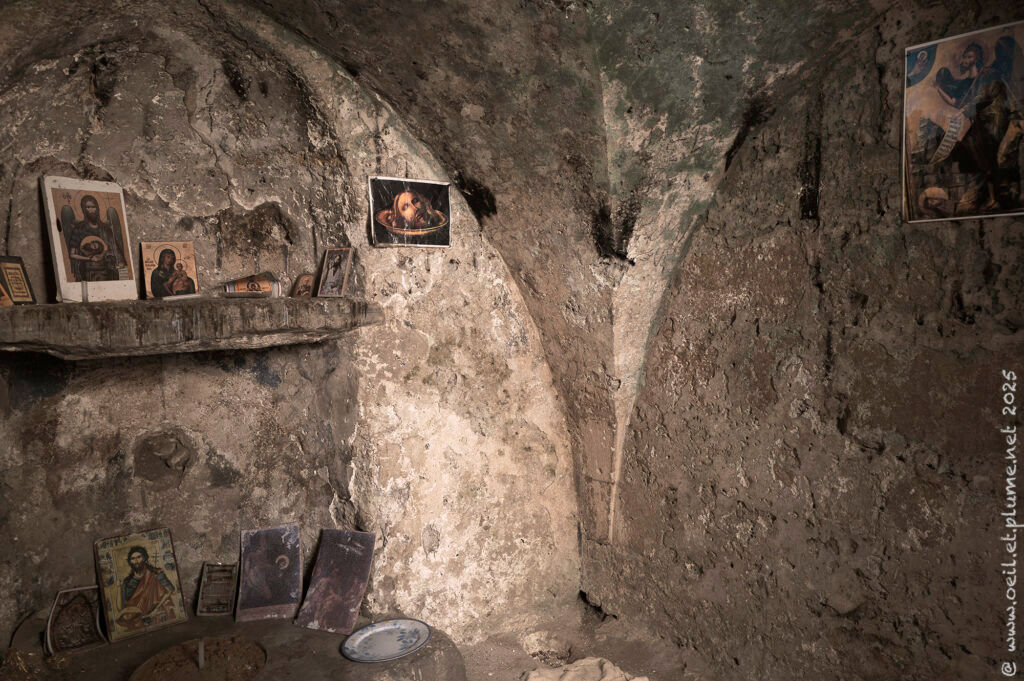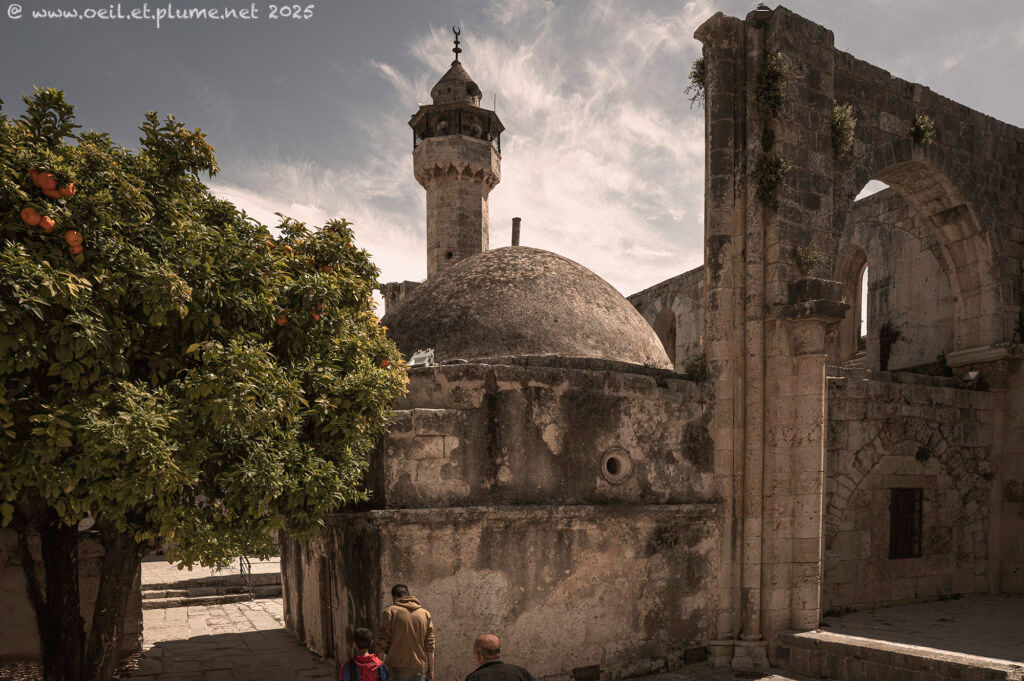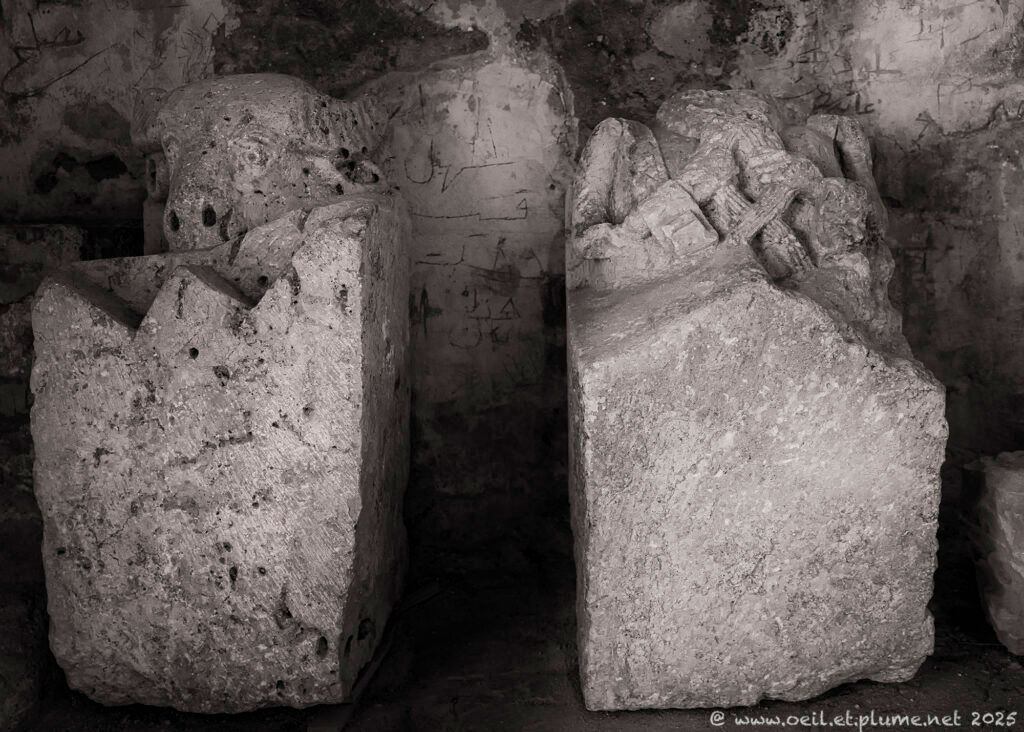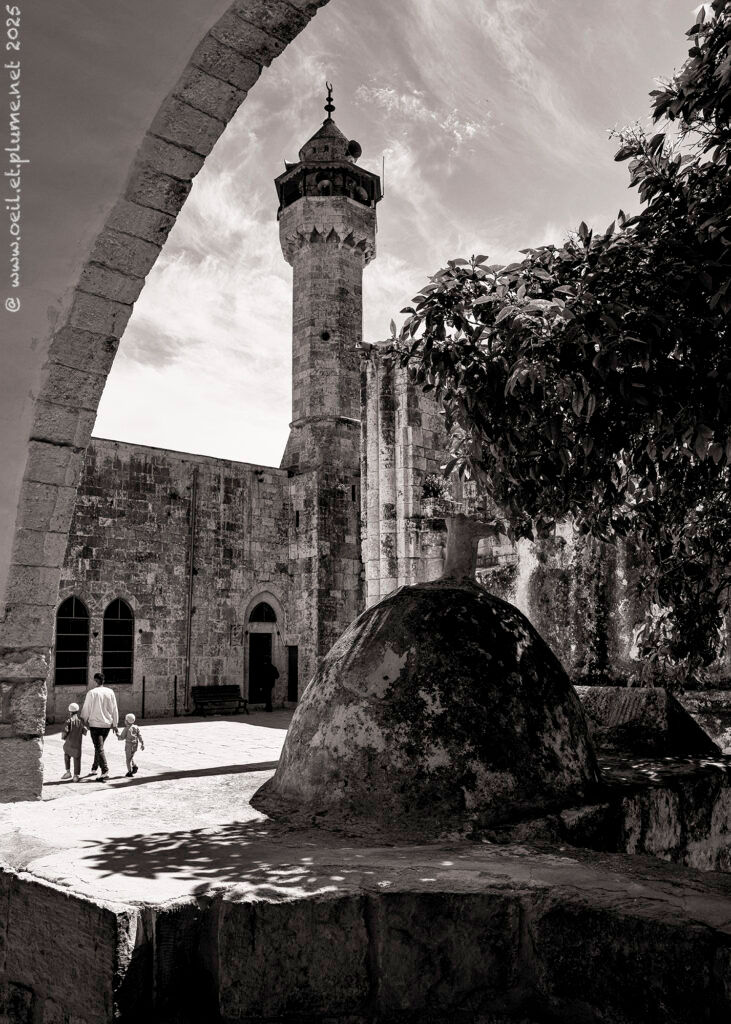Salome and John the Baptist
In a previous post entitled Salome, I explored the whereabouts of the famous princess in Muwakir, on the Jordanian shore of the Dead Sea. I may have found her in Sebastia in northwestern West Bank.
Historians will object that the mural painted in Sebastia represents a young Palestinian lady of our times, rather than a Maccabean princess of the first century AD. Never mind. I found in Sebastia the resting place of John the Baptist– Christian name of the Prophet Yahya in the Muslim faith.
In the first century AD, Sebastia was the capital town of the kingdom of Galilee and Perea, part of the Roman province of Syria. Herod Antipas, Salome’s father and son of Herod the Great, ruled over Galilee and Perea from 4 BC until 39 AD.
According to the New Testament and other historical sources, Herod Antipas arrested and detained John the Baptist for about two years before ordering his execution in about 32 AD. The prophet had previously announced the birth of Jesus before baptising him in the Jordan River. His growing popularity in Galilee threatened the political rule of Herod Antipas. Saint John’s decapitation was prompted by another issue. Herod Antipas repudiated his Nabatean wife and took as new wife Herodias, former spouse of his half-brother Philip. John the Baptist criticised the unlawful union of Herod Antipas and Herodias. Revengeful, the latter convinced her husband to execute the detainee.
Sebastia
Due to its strategic and beautiful location on top of a hill, today’s Sebastia was continuously inhabited since more than 5,000 years. In the Antiquity, it was under successfully Jewish, Assyrian, Babylonian and Greek rule. During the Roman period (1st cent. BC to 4th cent. AD), the town was dotted with many public infrastructures, including a basilica, a forum, a theatre, a temple for Augustus, a stadium, an aqueduct and cemeteries. In the 3rd century, the main entry street was adorned with no less than 600 columns. A few dozens of them still stand nowadays.
My imagination runs high while crisscrossing the colonnaded alley and the open fields. The crippled old stones, the olive trees, the spring grass and flowers mingle and tune wonderfully. Close to the town gate, the column series cohabit with the vestiges of commercial and administrative buildings. Sebastia must have been a bustling Roman town. Nowadays, it consists in a modest Palestinian village living essentially from farming activity. Once flourishing, tourism is anecdotical today.
Antique acropolis
The very top of the hill hosting Sebastia is full of vestiges of its antique splendour. What was a majestic walled acropolis displays disparate elements of its architectural puzzle, leaving the visitor to create mentally the missing pieces.
John’s decapitation
This columnated and plane area is believed to be the location where the fate of John the Baptist was defined. According to the New Testament, Herod’s daughter (princess Salome) dances during an official dinner. Pleased by the performance, Herod offers her the recompense of her choice. Herod’s new wife Herodias suggests the girl to demand the head of John the Baptist on a plate. Reluctantly, Herod orders the execution of John and his head is displayed on a plate during the dinner.
Higher on Sebastia’s hill, a crypt underneath in a modest Christian church built during the Byzantine period is believed to be the execution place of John the Baptist. The arched ceiling of the small room fails to warm the shady atmosphere of the site.
John’s detention and resting places
Following the macabre decapitation and display scene of John the Baptist, his disciples buried the body in the cave located underneath today’s Nabi Yahya Mosque in the centre of the Palestinian village. The head was sent to Damascus where it rests in today’s Umayyad Mosque.
According to prevailing beliefs, John the Baptist was detained in an underground cave located in today’s Mosque inner yard. I sneaked in there, to find a cool and bare room scarcely fed by a couple of daylight strays across in the high ceiling.
It is time to conclude, as the Friday’s main prayer in Nabi Yahya Mosque is imminent. I feel torn by contradictory feelings. On one hand, this sad story of gruesome revenge execution. On the other hand, Sebastia’s natural endowment and its historical blend of multiple cultures since the Iron Age to our times. And Salome as well. True, she was not there. Never mind.
Cheers,
